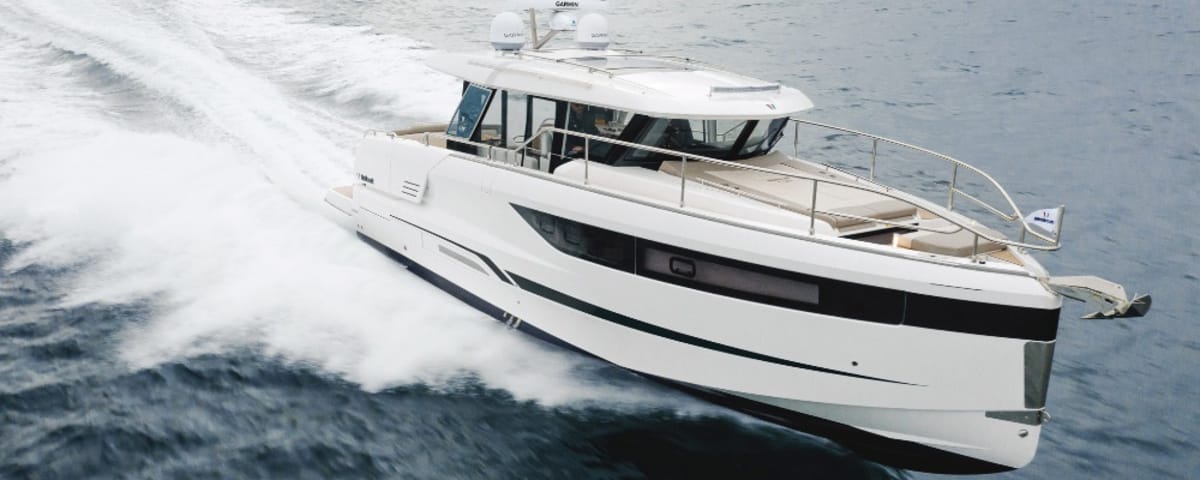Recommissioning Your Boat After Winter Storage: Avoiding Common Mistakes
After a period of winter storage, batteries can lose charge. Older batteries could discharge at a rate of 5% or more per month. Modern batteries (sealed lead-acid, gel, AGM, or lithium) have a much lower self-discharge rate, averaging around 2% per month. If you have no onboard power consumption and fully charge your batteries at the end of the season, they should only lose a maximum of 20% of their capacity over several months.
Some boaters use small solar panels or wind turbines to compensate for this loss. However, if you have no onboard consumers like alarms or bilge pumps, this can be detrimental. The energy source will cycle your batteries, charging when there’s sun or wind and discharging otherwise. Batteries have a limited number of charge/discharge cycles, and excessive cycling reduces their lifespan.
The Right Approach Upon Returning to Your Boat
When you return to your boat after a long absence, it’s tempting to switch on all electrical equipment to check if everything is working. This is a mistake. The first step should be to inspect and charge the batteries.
Battery Inspection
Before charging, assess the battery condition. There are two main types: flooded and sealed. Flooded batteries, becoming less common, have caps for topping up electrolyte levels and checking charge. Before charging, remove the caps and check the level; the plates should be just covered. Top up with distilled water if needed. Sealed lead-acid batteries don’t require topping up. Most have an indicator showing charge status: green (charged), orange (partially charged), black (discharged). AGM (absorbed glass mat) and gel batteries are also sealed. Lithium batteries are the newest technology and often have integrated electronics for monitoring their status via Bluetooth.
Minimum Recharge Time
With a modern constant-current charger, a full recharge cycle (bulk, absorption, float) takes 8-10 hours, depending on the battery condition. The charge is complete when the “float” indicator is lit. At this point, you can use electrical equipment. Constant-current chargers are designed to remain connected to the batteries and, when connected to a power source, can supply the current needed to power onboard equipment, up to their maximum output. If your charger provides 30 amps and you consume more, the excess will be drawn from the batteries.
Initial Checks
After switching the battery switches to “ON,” ensure there’s no current leakage. If your boat has an ammeter or battery monitor, the current consumption should be zero in the absence of any load. If there’s current draw, it indicates a device is on or there’s a current leak. Identify and fix the cause before proceeding.
Lighting: Watch Out for Bad Connections
Check the lights, including navigation lights, one by one. It’s common for some to fail after winter storage. A frequent cause is oxidation on the bulb contacts; clean them with a contact cleaner. Another cause is a blown bulb; replace it. Checking interior and exterior lights is straightforward. It’s more challenging for navigation lights at the masthead. Before climbing, use a voltmeter to ensure the light is powered. Then, test the bulb’s resistance with an ohmmeter; it should be almost zero. A high (infinite) resistance indicates a blown bulb or a broken wire. This test only works on standard filament bulbs, not LEDs.
Refrigeration
When you turn on the refrigerator, the compressor should start and stop after a while (10-30 minutes). The temperature inside should drop. The start/stop cycle should repeat. This is normal operation.
If the cycle doesn’t occur, the three most common causes are:
- The compressor doesn’t start: Check its power supply.
- The compressor starts and stops quickly: The battery voltage is too low, or the electronic unit is faulty.
- The compressor runs continuously: If it’s producing cold, it’s a thermostat problem. If it’s not producing cold, there’s a leak in the circuit.
The Stove
Most boats have gas stoves. First, check the supply hose. It must be in good condition, and the expiration date must be valid. Gas connection kits and hoses are typically guaranteed for 5 or 10 years. If everything is correct and the gas bottle isn’t empty, you can light the stove. Often, some burner ports are blocked; clean them with a wire brush.
Fresh Water System
If the water pump starts intermittently (brief bursts), it’s due to air in the system or a leaking tap (drip by drip). If the pump doesn’t work, check its power supply and pressure switch.
Water Heater
Most water heaters heat water with a 230-volt electric element (when using a generator or shore power) and, when the engine is running, with a coil through which engine coolant passes. If a water heater doesn’t work when connected to a 230-volt source but works normally when the engine is running, it’s not receiving 230 volts (check the voltage) or the electric element is faulty.
Windlass
If the windlass doesn’t turn, check the electrical contacts, the control box (remote or foot switch), the circuit breaker or fuse, and all connections.
Final Advice
Recommissioning a boat doesn’t require specialized knowledge. To avoid damaging your batteries, follow the advice to recharge them properly. While they’re charging, you can clean the interior, the deck, and put equipment in place.
Enjoyed this post by Thibault Helle? Subscribe for more insights and updates straight from the source.


